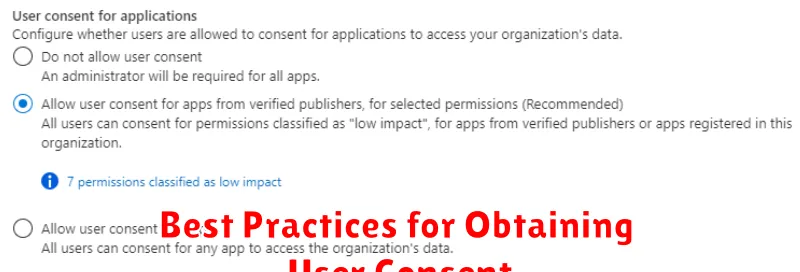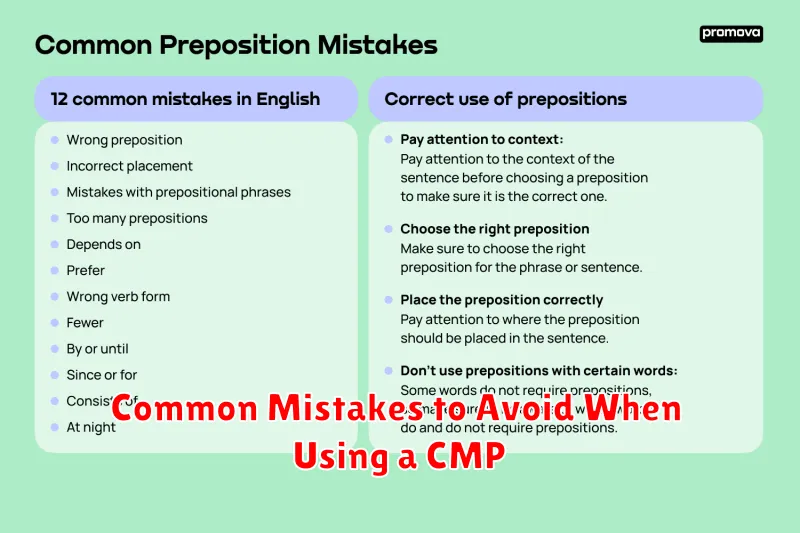In today’s digital age, user privacy is paramount. Businesses operating online must navigate an increasingly complex web of privacy regulations, including GDPR, CCPA, and other global mandates. This is where Consent Management Platforms (CMPs) come into play. CMPs are essential tools for obtaining and managing user consent for data collection and processing, ensuring compliance with these regulations while building trust with your audience. Understanding how CMPs function and how to implement them effectively is crucial for any organization looking to maintain a responsible and ethical online presence in the international market.
This article will delve into the world of Consent Management Platforms, providing a comprehensive overview of their features, benefits, and best practices for implementation. We will explore how CMPs help businesses manage user consent across various touchpoints, from website cookies to marketing emails. By understanding the functionalities of CMPs, you can better navigate the privacy landscape, protect user data, and foster a culture of transparency and accountability within your organization. Ultimately, mastering consent management is not just about compliance; it’s about building lasting relationships with your customers based on trust and respect for their privacy rights.
What is a Consent Management Platform (CMP)?
A Consent Management Platform (CMP) is a software solution that helps website and application owners obtain, manage, and document user consent for data collection and processing activities. In essence, it acts as a central hub for managing user preferences regarding cookies, tracking technologies, and other data-related practices.
The primary function of a CMP is to ensure compliance with various data privacy regulations, such as the General Data Protection Regulation (GDPR) and the California Consumer Privacy Act (CCPA). By providing a clear and transparent mechanism for users to grant or deny consent, CMPs empower individuals to control their personal information.
Furthermore, a well-implemented CMP facilitates a more trustworthy and ethical online environment. It demonstrates a commitment to respecting user privacy, which can enhance brand reputation and foster stronger customer relationships.
Why are CMPs Important for Website Compliance?
Consent Management Platforms (CMPs) are critical for website compliance due to the increasing stringency of global privacy regulations. These regulations, such as the General Data Protection Regulation (GDPR) in Europe and the California Consumer Privacy Act (CCPA) in the United States, mandate that websites obtain explicit user consent before collecting, processing, or sharing personal data.
Without a CMP, websites risk non-compliance, leading to significant fines and reputational damage. CMPs automate the process of obtaining and managing user consent, ensuring that websites adhere to legal requirements. They provide a clear and transparent mechanism for users to understand how their data is being used and grant or deny consent accordingly. This proactive approach helps organizations avoid legal penalties and maintain a trustworthy relationship with their users.
Here’s a brief overview:
- Legal Compliance: Adherence to GDPR, CCPA, and other privacy laws.
- User Trust: Demonstrates respect for user privacy, fostering trust.
- Avoid Penalties: Reduces the risk of fines for non-compliance.
Key Features and Functionality of a CMP
Consent Management Platforms (CMPs) offer a range of essential features to facilitate compliance with privacy regulations. These functionalities are critical for websites to legally and ethically manage user consent.
Key features typically include:
- Consent Banner/Pop-up Display: Presenting users with clear and concise information about data collection practices and options for granting or denying consent.
- Granular Consent Options: Allowing users to choose which specific types of cookies or data processing activities they consent to.
- Consent Logging and Storage: Securely recording and storing user consent choices for audit trails and compliance verification.
- Cookie Scanning and Categorization: Identifying and classifying all cookies and trackers used on a website.
- Integration with Third-Party Vendors: Communicating consent choices to advertising platforms, analytics tools, and other third-party services.
- Geographic Targeting: Adapting consent requests based on the user’s location to comply with regional privacy laws (e.g., GDPR in Europe, CCPA in California).
- Reporting and Analytics: Providing insights into consent rates, user preferences, and compliance metrics.
Understanding GDPR, CCPA, and Other Privacy Regulations
General Data Protection Regulation (GDPR), originating in the European Union, imposes stringent requirements on the collection, processing, and storage of personal data of EU citizens. It mandates explicit consent for data processing, the right to access and erasure of data, and data breach notification requirements.
The California Consumer Privacy Act (CCPA) grants California residents significant rights regarding their personal information. This includes the right to know what personal information is collected, the right to delete personal information, and the right to opt-out of the sale of personal information.
Other privacy regulations, such as the LGPD (Lei Geral de Proteção de Dados) in Brazil and various state-level laws in the US, further contribute to the complex global privacy landscape. These regulations often share common principles with GDPR and CCPA but may have unique requirements. Compliance with these diverse regulations necessitates a robust and adaptable consent management strategy.
Understanding these regulations is crucial for businesses operating globally or interacting with individuals in these jurisdictions. Failure to comply can result in significant fines and reputational damage.
Implementing a CMP: A Step-by-Step Guide
Implementing a Consent Management Platform (CMP) is a crucial step towards achieving website compliance with privacy regulations. The following outlines a simplified, step-by-step approach:
- Assessment and Planning: Conduct a thorough audit of your website’s data collection practices. Identify all cookies, trackers, and third-party scripts. Determine which regulations (e.g., GDPR, CCPA) apply to your audience.
- CMP Selection: Research and select a CMP that aligns with your needs and budget. Consider factors like ease of use, customization options, integration capabilities, and reporting features.
- Configuration and Customization: Configure the CMP with your company information, privacy policy details, and specific consent requirements. Customize the appearance of the consent banner or pop-up to match your website’s branding.
- Implementation and Testing: Implement the CMP code on your website. Thoroughly test the functionality to ensure that consent is properly captured and that data processing is contingent on user consent.
- Monitoring and Maintenance: Continuously monitor the CMP’s performance and compliance. Stay updated on evolving privacy regulations and adjust your CMP configuration accordingly. Regularly review consent logs and user data to ensure compliance.
Best Practices for Obtaining User Consent

Obtaining valid user consent is paramount for adhering to privacy regulations and fostering trust. Transparency is key; users must understand precisely what data is collected, how it’s used, and with whom it’s shared.
Here are some best practices:
- Use Clear and Plain Language: Avoid legal jargon.
- Provide Granular Options: Allow users to consent to specific data processing activities.
- Obtain Affirmative Consent: Pre-ticked boxes are not acceptable. Require a positive action, such as clicking an “I Agree” button.
- Keep Records of Consent: Maintain logs of when and how consent was obtained.
- Ensure Easy Withdrawal of Consent: The process for withdrawing consent should be as simple as granting it.
- Regularly Review and Update Consent Mechanisms: Adapt to changes in regulations and user expectations.
By implementing these practices, organizations can demonstrate a commitment to respecting user privacy and building stronger, more trustworthy relationships.
Integrating CMPs with Marketing and Advertising Technologies
The effective integration of Consent Management Platforms (CMPs) with marketing and advertising technologies is crucial for maintaining compliance and respecting user privacy preferences. This integration ensures that user consent is respected across all platforms and tools utilized for marketing and advertising activities.
CMPs act as a central point for managing consent and communicating these preferences to various marketing and advertising technologies, such as:
- Demand-Side Platforms (DSPs): Ensuring that ad targeting aligns with user consent.
- Customer Relationship Management (CRM) Systems: Respecting communication preferences for marketing campaigns.
- Analytics Platforms: Filtering data based on consent to avoid tracking users who have opted out.
Proper integration involves configuring APIs and data flows between the CMP and these technologies. Without this integration, there is a risk of violating privacy regulations and eroding user trust.
The Role of CMPs in Building Trust with Users
Consent Management Platforms (CMPs) play a crucial role in fostering trust between businesses and their users. By providing transparency and control over data usage, CMPs empower users to make informed decisions about their personal information.
When a website implements a CMP effectively, it signals a commitment to privacy and data protection. This can lead to increased user confidence and a stronger sense of security, which are essential for building long-term relationships.
Here’s how CMPs contribute to building trust:
- Transparency: CMPs provide clear and accessible information about data collection practices.
- User Control: CMPs empower users to grant or deny consent for specific data processing activities.
- Compliance: Demonstrating adherence to privacy regulations, like GDPR and CCPA, builds credibility.
Ultimately, utilizing a CMP is not just about legal compliance; it’s about prioritizing user privacy and building a foundation of trust that benefits both the business and its users.
Common Mistakes to Avoid When Using a CMP

Implementing a Consent Management Platform (CMP) is crucial for website compliance, but certain mistakes can undermine its effectiveness. Avoiding these pitfalls is essential to ensure you’re truly respecting user privacy and adhering to relevant regulations.
One frequent error is using a pre-ticked consent box. Consent must be freely given, which means users need to actively opt-in. Pre-checked boxes violate this principle and could lead to legal repercussions.
Another common mistake is not providing granular consent options. Users should be able to choose which types of data they allow you to collect and for what purposes. Offering only blanket consent options is insufficient.
Failing to properly document and store user consent is also a critical oversight. You must be able to demonstrate that consent was obtained and track changes to user preferences. Without adequate records, proving compliance becomes impossible.
Ignoring the CMP’s impact on website performance can lead to a poor user experience. Ensure the CMP is optimized to minimize latency and avoid negatively affecting page load times.
Finally, simply setting up a CMP and forgetting about it is a mistake. Regularly review and update your CMP configuration to reflect changes in privacy laws, your business practices, and user expectations.
The Future of Consent Management and CMPs
The landscape of consent management is poised for significant evolution, driven by increasing user awareness and the continuous development of privacy regulations globally. Future CMPs will likely become more sophisticated, leveraging artificial intelligence (AI) and machine learning (ML) to optimize consent collection processes and predict user preferences.
Anticipated trends include enhanced integration capabilities with a wider array of marketing and advertising technologies, enabling seamless data transfer while adhering to privacy standards. We also expect to see a greater emphasis on user experience (UX), with CMP interfaces designed to be more transparent and intuitive, fostering trust and encouraging users to actively manage their data preferences.
Furthermore, the development of standardized APIs and protocols for consent data sharing is expected to streamline interoperability between different CMPs and platforms. As privacy regulations continue to evolve, CMPs will need to adapt quickly, incorporating new requirements and providing businesses with the tools to maintain compliance effectively. The focus will be on providing dynamic consent, allowing users to easily change their preferences and organizations to adapt in real-time.

